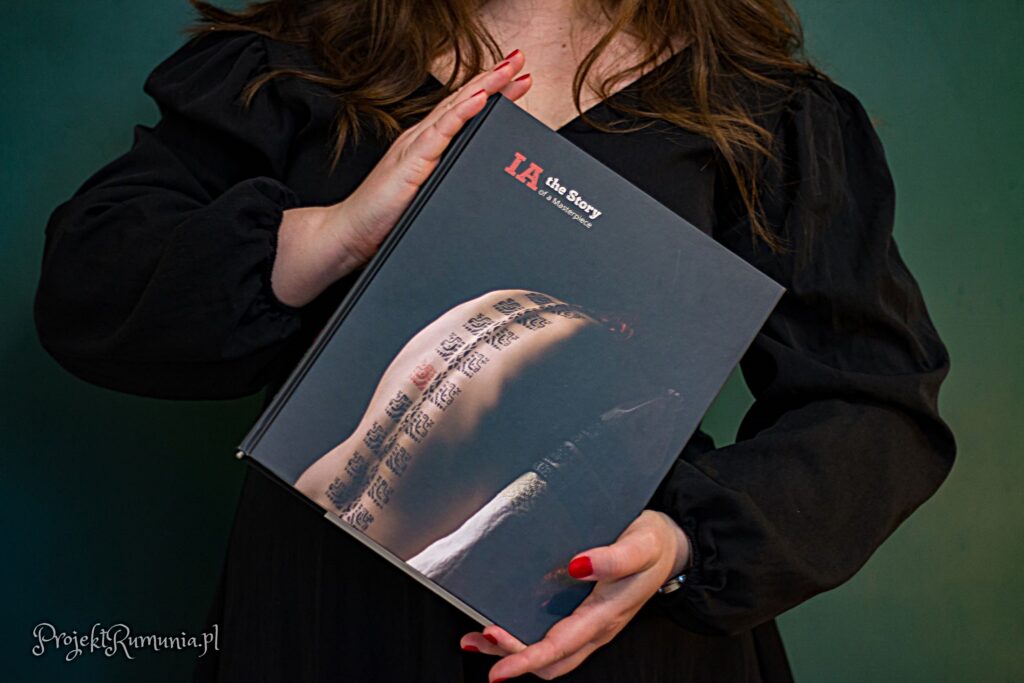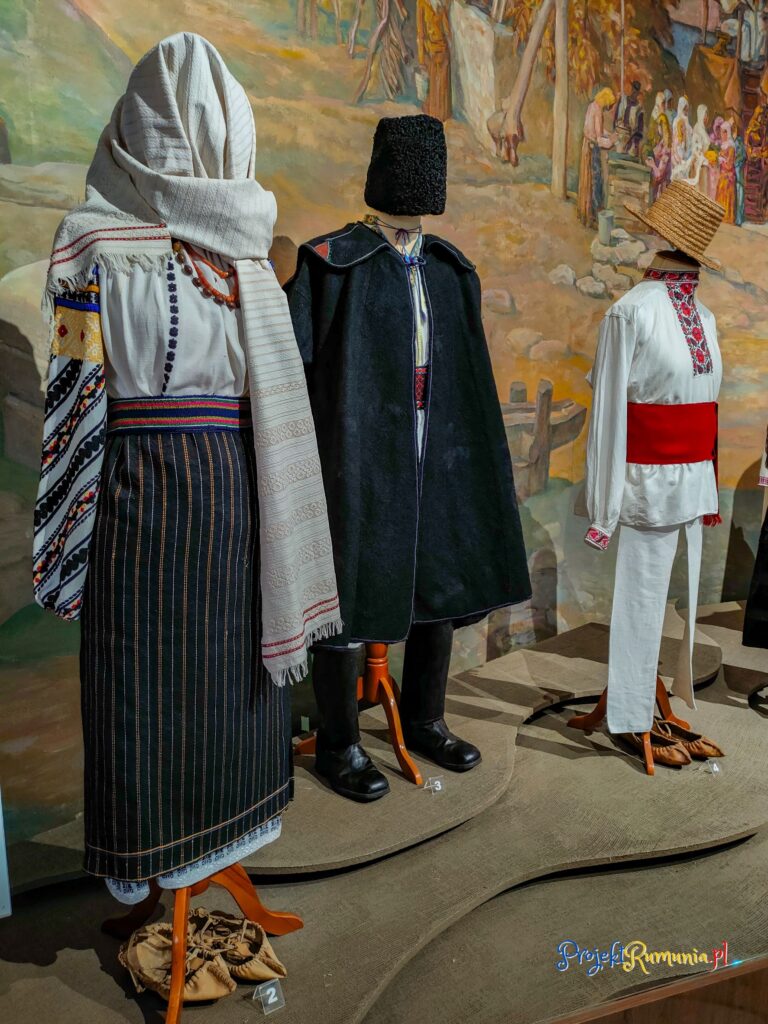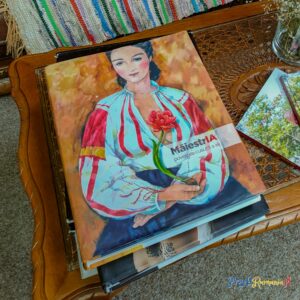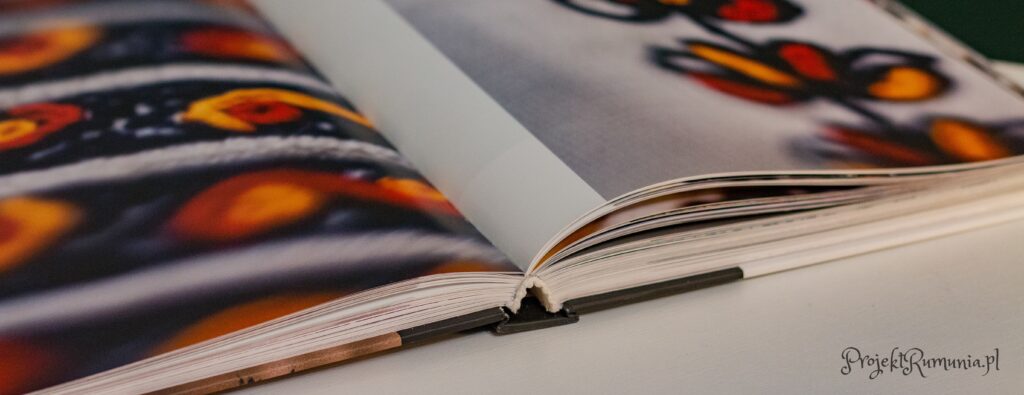Polskie tłumaczenie wywiadu znajduje się pod tym linkiem: „Rumuńska bluzka ia – piękny element tradycji…”
“One cannot exhaust the subject of Romanian traditional costume in just a couple of sentences.”[1] Traditions in Romania are still alive – even modern women wear beautifully embroidered blouses called ia, for example with jeans. You can also see it in Moldova.
The art of the traditional blouse with embroidery on the shoulder (Rom. altiţă) was inscribed in 2022 on the UNESCO Representative List of the Intangible Cultural Heritage of Humanity.
Ia has a simple cut and rich and colourful ornamentations. Most of the blouses are white and they are made of natural fibres. There are many styles and techniques, depends on the region. Traditional blouses with altiță are made entirely by hand.[2]
During my January visit to Chisinau, I had the pleasure of having a conversation with Stela Moldovanu – an amazing woman, founder of art-salon MOLDECO and a great project called MăiestrIA. As an artist and educator, she helps women all over the world rediscover their roots. I asked her about a few things related to the traditional Romanian blouse.
[1] „IA the Story of a Masterpiece” by Stela Moldovanu, page 374. [2] UNESCO website

Martyna, Projekt Rumunia: I am so happy that you found some time for me to talk about your beautiful traditions. First, could you tell my followers: what is ia and what is ia for you?
Stela Moldovanu: Ia is a part of our traditional costume that we can reproduce nowadays, but some parts are very complicated and we just can’t do this at home as our grandmothers did before. First of all, ia is a part of our identity, it’s a part of Romanian culture and here – in Moldova – when we wear ia, we just show everybody that we are the part of this culture. This is important for us. Ia has a great symbolism, it means the relationship of women who sewed this ia by hands, with universe, nature and community. As all the women did in the past for their families all kind of shirts, now we make our shirts in connection to our past, to our roots.
M: How did it start? When did you start being fascinated with those traditions?
S: It started in 2016, when I discovered, that it’s not only a decorative thing. It’s a shirt with a great meaning, symbolism. I realized that we have to rediscover this. And I decided to make a mission of my life to do something more to show for a new generation of women what our grandmothers did in the past.
M: You have created a big community around this idea. Do you have any company that supports you in this or you do everything on your own?
S: At the beginning it was just my passion, my investment, but now I have a company. It’s kind of business, because we have online courses – free and paid ones. I also started a group on Facebook “MăiestrIA în acțiune” which has now over 18 thousand members – it’s the place where we inspire, learn and help others sew their own Romanian shirt.

(photos taken at the National Museum of Ethnography and Natural History in Chisinau, Republica Moldova)
M: If women want to find information about ia and tips how to make it, which course would you recommend – basic via e-mail or a different one?
S: I recommend a course for the beginners first. It’s about 20-30 e-mails that I send to people interested in this kind of knowledge. It’s called “First steps” (Rom. “Primii pași”) and shows you what you have to do to start. You know more with each lesson, you learn about ia. Now my free online course was accessed by more than 15 thousand women. It’s a lot of information that I sent worldwide. For me it’s very interesting to spread it, because now we have people from all over the world in this community.
M: Well, I attend your basic course “Primii pași” and I’m impressed, because it’s so full of knowledge! And could you tell me, how long does it take to make ia from the beginning to the end?
S: If you work daily for 3-4 hours, it could take 6 months. But with 1-2 hours per day you need to spend about one year. It depends on the model, but we teach how to make traditional holiday ia, for special occasions. It’s rich in ornaments, so usually it takes one year.

M: Would you like to tell us what is altița? And maybe something about UNESCO List?
S: Altița is the part of sleeve, that is on the shoulder. It’s very important thing because of the symbols on it – for example sky, stars, birds, which are connected with God. Usually it’s the most embroidered part of the shirt. Why altița is introduced to UNESCO Heritage List? Because It’s a very specific element in our culture. It represents a special cut of the parts of our shirt. And it’s very unique for our culture. Shirts with altița are spread all over Romania. It’s not only regional thing. We can find those elegant shirts in e.g. Muntenia, Oltenia, Bucovina or Moldova. Everybody made this, because it was comfortable to wear.
M: Speaking of cut, please tell me, do all ias have a little square piece of fabric sewn under the sleeve? It’s not found in other clothes.
S: Yes, because ia is made from one piece of fabric that we cut for smaller parts and we don’t have diagonal sleeves like in modern clothes. We have only square parts. So this small piece of fabric is necessary to have the possibility to move our hands while wearing these sleeves.
M: Finally, I would like to ask where do you show your ias? Maybe you can tell us about any international projects or places where people can see ready ias?
S: We had lot of exhibitions in Moldova, in Romania and also in Madrid. For example we were in Vienna. This year we will have an exhibition in Lisbon and we go everywhere where we are invited, because it’s important for us to show this kind of richness of our culture. It’s important to show that these shirts are made by women nowadays, who have a lot of other activities. They do not specialize in this, it’s not their job. It is just their passion, filled with energy and soul. We don’t sell our ias. We make these shirts for us or our daughters. When you make something for sale, you just do it in a hurry. It’s not the same thing as we do, because for us it’s a kind of meditation. Our ias are made with passion, it’s not commercial.
M: And now the really last thing: maybe there is something that you would like to tell our readers and people in Poland?
S: I think Poland has also a lot of traditional shirts and maybe you just have to rediscover them. Maybe you can go to your museum and look attentively to see what the meaning of these costumes really is. Because in all the traditions there was a collective design – women created such art for hundreds of years. Such clothes are definitely pieces of art.
M: Thank you very much for your time and sharing the story of your passion with me and my readers!

I would also like to thank Stela for a special gift – her book “IA the Story of a Masterpiece”. I am amazed by those wonderful colours! But there are not only photos – people will find there both historical knowledge and practical tips. This is one of the most beautiful souvenirs from my visit to Moldova. You can buy this book in English and in Romanian via MăiestrIA’s online shop.
And the basic e-mail course (“Primii pași”), which we mentioned during the conversation is in Romanian, but you can translate it via Google Translator or a browser plug-in. Where there’s a will there is a way! 😉


